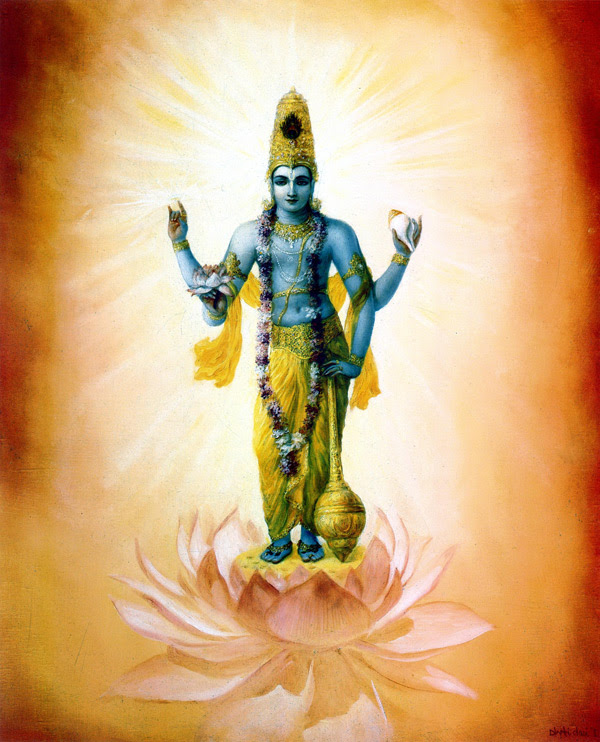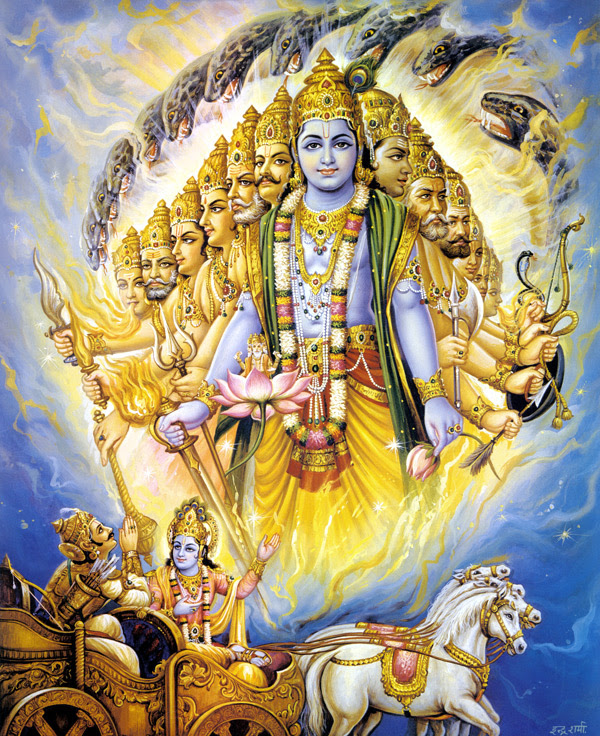courtesy:Sri.S.Ramaswamy

The Bhagavad Gita is the song of God

Some interpreters see the Bhagavad Gita as an allegorical fable and dismiss
the war completely as a literary device.
Comparing Kurukshetra to the body, they believe Arjuna symbolizes the
Jivatma (individual soul) and Krishna the Paramatma (supersoul). The
Kauravas with their opposing army, apparently represent the thousands of
sinful inclinations that confront and threaten to overwhelm the individual
soul

The battle of Kurukshetra is no fable or myth but a historically documented
war in the Mahabharata - of which the Bhagavad Gita is a small part.
Yet, the Lord does make His personal appearance in a manner that is
powerfully symbolic. Indeed, in the Bhagavad Gita (Chapter 13), Krishna
refers to the body as the kshetra (field), to the soul as kshetrajna (knower
of the field) and to Himself as the knower of all fields.
The Bhagavad Gita discusses FIVE primary topics:
1) GOD (Bhagavan, Paramatma and Brahman)
2) SOUL (Jivatma or Jiva)
3) MATTER (Prakriti composed of Sattva, Rajo and Tamo gunas)
4) KARMA (The progressive entanglement of the Jiva in Prakriti)
5) YOGA (The process of liberation from Prakriti and reunion with Bhagavan)
The Bhagavad Gita describes how the soul may free itself from karmic
enslavement to matter and through the practice of yoga reunite with God.
The Upanishads are relatively complex philosophical texts in the Vedas.
Gitopanishad is another name for the Bhagavad Gita.
Krishna, the cowherd boy, having milked the Upanishadic cows, feeds us the
predigested cream as the Gitopanishad.

The Bhagavad Gita is the song of God

Some interpreters see the Bhagavad Gita as an allegorical fable and dismiss
the war completely as a literary device.
Comparing Kurukshetra to the body, they believe Arjuna symbolizes the
Jivatma (individual soul) and Krishna the Paramatma (supersoul). The
Kauravas with their opposing army, apparently represent the thousands of
sinful inclinations that confront and threaten to overwhelm the individual
soul

The battle of Kurukshetra is no fable or myth but a historically documented
war in the Mahabharata - of which the Bhagavad Gita is a small part.
Yet, the Lord does make His personal appearance in a manner that is
powerfully symbolic. Indeed, in the Bhagavad Gita (Chapter 13), Krishna
refers to the body as the kshetra (field), to the soul as kshetrajna (knower
of the field) and to Himself as the knower of all fields.
The Bhagavad Gita discusses FIVE primary topics:
1) GOD (Bhagavan, Paramatma and Brahman)
2) SOUL (Jivatma or Jiva)
3) MATTER (Prakriti composed of Sattva, Rajo and Tamo gunas)
4) KARMA (The progressive entanglement of the Jiva in Prakriti)
5) YOGA (The process of liberation from Prakriti and reunion with Bhagavan)
The Bhagavad Gita describes how the soul may free itself from karmic
enslavement to matter and through the practice of yoga reunite with God.
The Upanishads are relatively complex philosophical texts in the Vedas.
Gitopanishad is another name for the Bhagavad Gita.
Krishna, the cowherd boy, having milked the Upanishadic cows, feeds us the
predigested cream as the Gitopanishad.